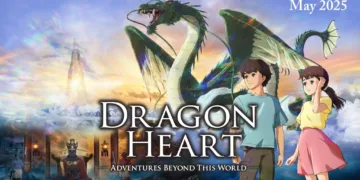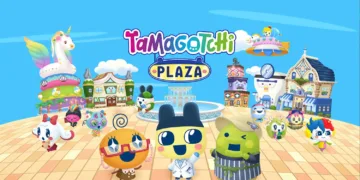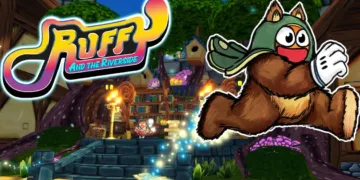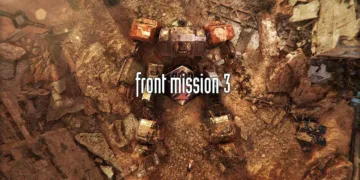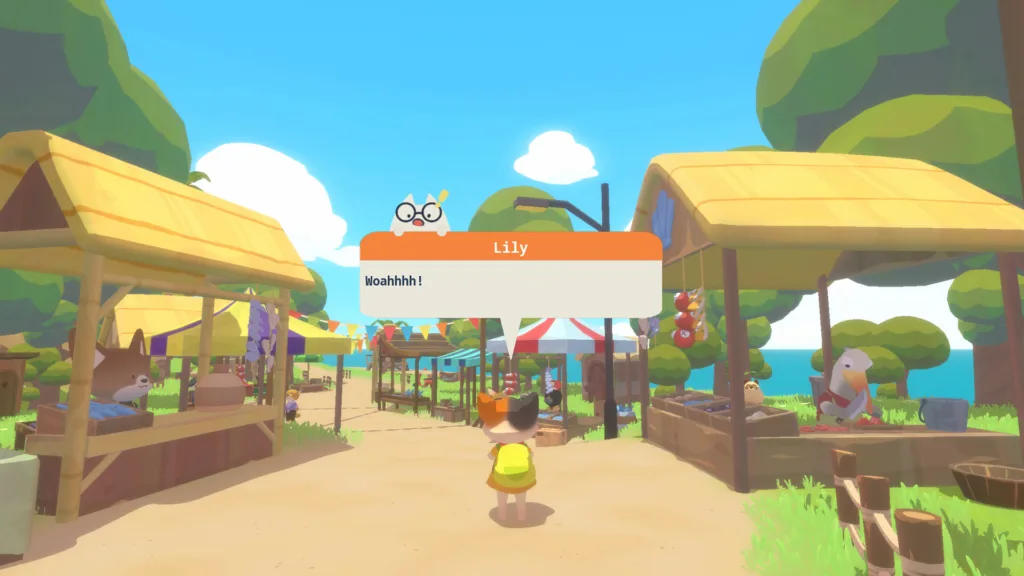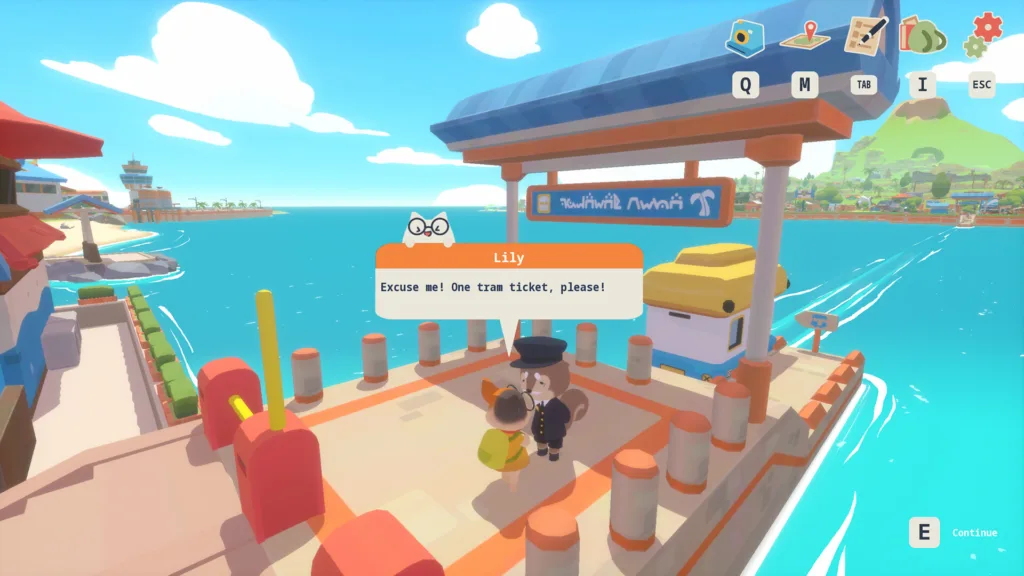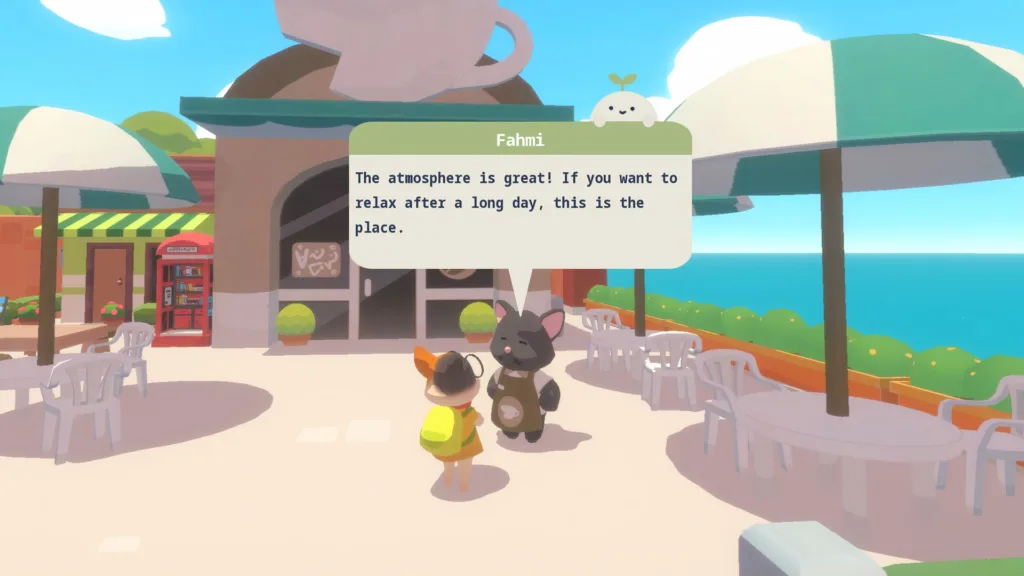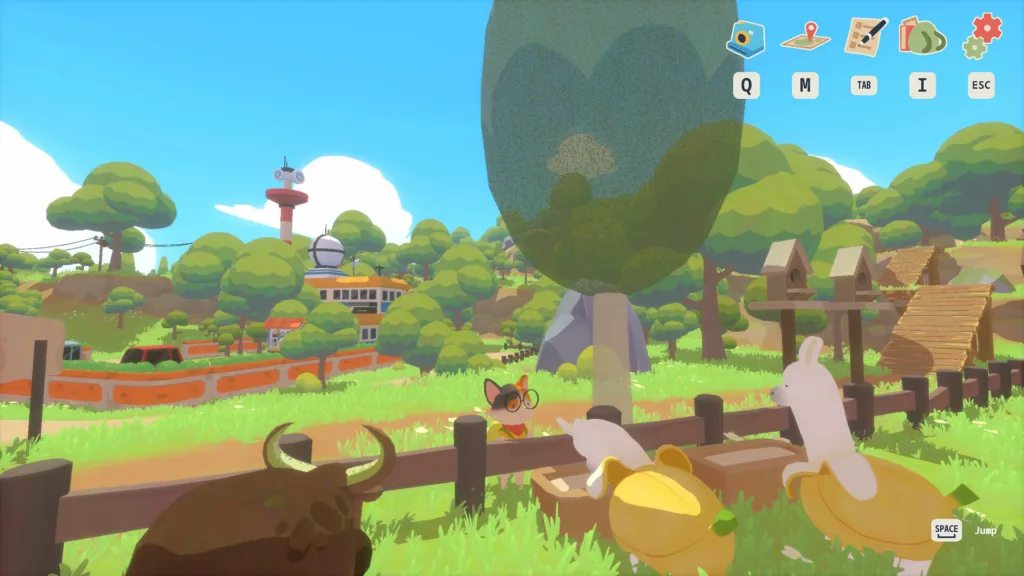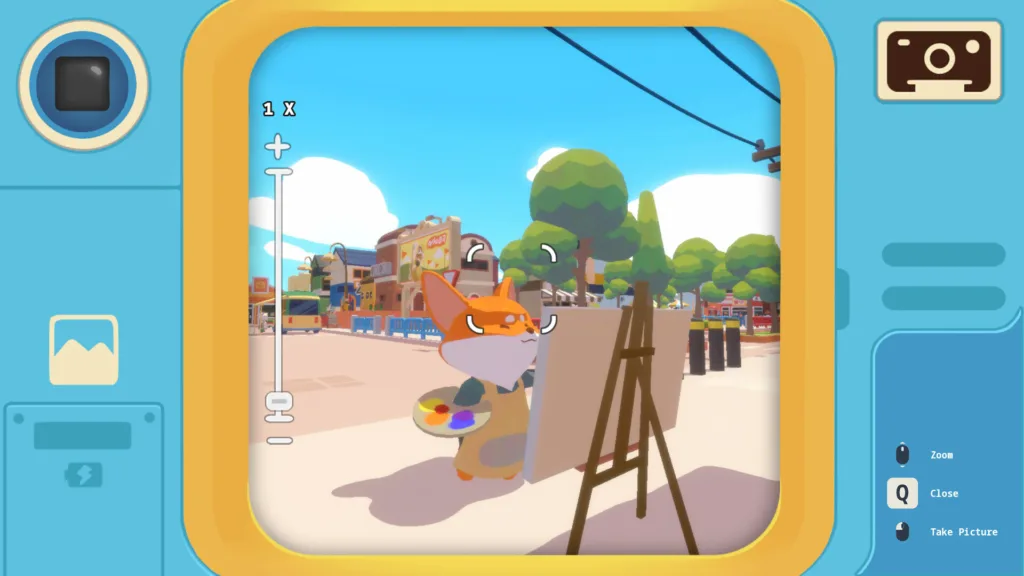A curious kitten named Lily is on a heartfelt mission in Petit Island by Xelo Games, a cozy adventure game with a story. She travels to Petit Island with her Grandpaw’s worn-out journal to recreate his favorite moments, using photography and exploration to piece together his past.
The game’s mechanics center on lighthearted activities like fishing, bug-catching, and taking pictures of the island’s eccentric residents, all while delving into a narrative full of nostalgia and heart.
Fans of casual, family-friendly games will love Petit Island because of its easy-going pace and approachable style. Thanks to the bright graphics, funny characters, and cozy tone, it’s a delightful option for players looking to relax from high-stakes or complicated gameplay.
Offering something for both kids and adults who want to relax in a bright, tropical sandbox, its mix of humor and heartfelt storytelling ensures wide appeal.
Piecing Together the Past: A Narrative Woven with Heart
At its heart, Petit Island is a personal story about family, memory, and leaving a mark. Using her grandfather’s old journal as a guide, the protagonist, Lily, sets out on a journey to Petit Island to record his fading memories. It’s like every picture she takes, chat, and errand she runs helps her connect with his past.
This idea is simple, but it hits home because everyone wants to keep family history alive and value connections before they fade away. Grandpaw’s vulnerability and Lily’s resolve to honor his memories are the narrative’s emotional anchor, creating a touching dynamic that feels personal and relatable.
There are ten chapters in the game, and each one is about a different important person in Grandpaw’s life. These chapters cleverly combine tools for reconstructing memories with stories about characters. Grandpaw’s main quests involve taking pictures of people and places that remind him of his childhood. In contrast, side quests involve helping the people on the island with small, frequently humorous jobs.
This layered progression keeps the narrative interesting by balancing emotional weight with lighthearted moments. To make the story easier to understand, the task markers and journal-based maps make exploration easier. However, some players may feel that the simple structure limits their ability to make meaningful choices or find new things.
Petit Island does a great job of studying family, memory, and growth. The idea of sharing experiences with an older loved one feels heartfelt, and the game’s silly tone, exemplified by characters like the MuskCATeers, adds humor without taking away from its emotional core. This equilibrium keeps the narrative sincere without becoming overly sweet, creating a cozy but powerful storytelling experience.
Gentle Journeys: How Gameplay Shapes the Adventure
The core of Petit Island’s gameplay is its open-world structure, which invites players to discover a lively tropical world full of eccentric residents and charming landmarks. The island feels alive, with its busy towns, quiet beaches, and secret coves just waiting to be found. The straightforward quests are what make the experience what it is.
They include major story tasks like taking pictures of places important to Grandpaw’s memories and side missions like running errands for locals. The quest system is easy to use, and the goals are marked on the map in the notebook. This makes sure that players never get lost. Still, it also removes the sense of discovery by leaving little room for unexpected gameplay or significant deviance from the planned course.
Photography is both the thematic and mechanical heart of the game. Lily holds a camera and records times that bring Grandpaw’s memories back to life. The act of photography feels deeply connected to the narrative’s focus on preserving fleeting moments, whether it’s taking pictures of colorful NPCs, capturing stunning views, or taking playful selfies.
The process is elevated beyond a simple function by the distinctive poses of each character, which gives it more charm and turns it into a way to tell stories. The camera’s ease of use ensures accessibility. Still, it leaves room for players to frame their shots uniquely, promoting a personal touch in each picture.
Relaxing activities like fishing and bug catching balance the exploration of the island. Players can gather various species dispersed throughout the island using tools like a fishing stick and a bug net. Fish can be seen in the water as white lines, but bugs are hard to get close to without scaring them away.
Thanks to the simple but satisfying gameplay features, players are rewarded with a growing collection of animals to use in side quests or sell for money. These tasks fit in well with Petit Island’s easy-going design philosophy even though they lack the complexity of comparable systems in games like Animal Crossing.
The gameplay loop isn’t just photography, fishing, and catching bugs; other features add variety. A few simple and forgiving light platforming challenges are scattered throughout, like gliding with Lily’s cute yellow parasol. Players can find buried treasures by digging, which adds a small amount of exploration and resource gathering. These parts don’t add much to the game’s mechanics but add to its charm and help keep things interesting.
Petit Island adds mounts to help people get around more quickly because of its size. The Bananallama, a llama dressed as a banana, is the best choice. It perfectly captures the game’s playful mood. Other horses, like the Mangofallo, make the character look different, but they all do the same thing. The awkward controls on the mounts add to their quirky personality instead of taking away from the experience. This makes getting around the island quick and delightful.
Offering a low barrier to entry for players of all skill levels, Petit Island is designed with accessibility in mind. For casual gamers or those looking for a stress-free escape, its moderate challenge ensures a soothing experience. However, the lack of challenge may leave some players feeling unfulfilled, especially those used to playing more difficult indie games. The game’s cozy feel is helped by its simplicity, but it also limits its depth and replayability.
A Whimsical World Brought to Life
Petit Island is in a lively tropical setting that exudes charm at every turn, offering a carefully crafted environment that feels alive and inviting. Each area is designed to instill a playful wonder, from sandy beaches and lush parks to busy, colorful towns.
There are many delightful details on the island, like graffiti on the walls, phone booths that can be used as save points, and secret corners that are ready to be found. Its design balances accessibility and cozy exploration, creating a sandbox-like playground that feels cozy rather than overwhelming. The general style is reminiscent of a child’s toybox, where there is something delightful to discover around every corner.
The anthropomorphic people of Petit Island are the island’s beating heart, giving it personality and humor. Every character feels carefully thought out, from fruit-and-vegetable-themed animals like tomato crabs and leek birds to quirky NPCs with their personalities.
The MuskCATeers, a trio of kittens dressed in trench coats who exude both charm and humor and the famous Bananallama, a llama dressed as a banana that can also be used as a mount, are two designs that stand out. With their playful interactions and distinctive designs, these characters and animals bring the island to life rather than just filling it.
The cozy tone of the game is perfectly complemented by its low-poly aesthetic, which combines simplicity with bright color choices to create a world that feels inviting and warm. This type of art, which looks like hand-made dioramas, adds to the nostalgic and childlike mood. The animations are also very well done.
Every movement, like Lily’s happy skipping, her soft parachuting glide with a yellow parasol, or the over-the-top movements of the island’s strange creatures, adds to the charm. The graphics in Petit Island don’t just set the scene; they actively ask players to become part of the game’s heartwarming and playful world.
A Symphony of Whimsy and Warmth
The music in Petit Island is a carefully chosen mix of relaxing and fun sounds that go well with the cozy and playful atmosphere of the game. Each island area has its music, which changes based on the environment. For example, the music is upbeat in busy town squares, while on sunny beaches, the music is relaxing.
Players are encouraged to take their time and enjoy the world by seamlessly adapting music to place, enhancing the sense of immersion. The music doesn’t just go with the adventure; it adds to it, making heartwarming moments more emotional while maintaining the game’s light, unwinding atmosphere.
The music accompanies a soundscape full of charming effects and many small details. The soft rustling of leaves, birds chirping, and waves’ faraway hum create a background that feels alive without overwhelming the player.
Subtle audio cues like the satisfying “click” of a camera shutter or the soft splash of a fishing line hitting the water ground the gameplay mechanics in tactile reality. These small, thoughtful touches give the game a sense of presence and kindness.
Combined with the game’s bright graphics, the sound design makes Petit Island’s mood truly special. The sounds and sights work together to create a peaceful and inviting world, encouraging exploration while fostering a sense of nostalgia and emotional connection. The experience feels more like entering a daydream than like playing a game.
Crafting Your Journey: Customization and Progression
A subtle but delightful part of Lily’s trip to Petit Island is customization. A small selection of fur patterns, clothes, and backpack designs can be used to change how she looks. Even though there aren’t as many choices as in bigger RPGs or life simulation games, they’re charming and go well with the game’s lighthearted heart. These small details allow players to give their protagonists a personal touch without overwhelming them with options, whether to dress Lily in pink or a classic ginger tabby fur design.
The tools Lily gets over time are very important for moving forward in Petit Island. The camera, fishing rod, bug net, and parasol aren’t just tools for gameplay; they’re also narrative tools that help her connect with the island and its people.
For example, the camera turns normal exploration into a way to tell a story by recording Grandpaw’s memories and letting players interact with the environment in new ways. It’s also easy to get achievements—there aren’t any jobs you can miss, or that are hard, so all players can finish them. The game’s focus on relaxation over challenge is emphasized by its simplicity, though some may find it lacking depth.
The game’s collectibles and side quests make it fun to play repeatedly. For completionists, playing for longer can mean collecting insects and fish or going back to places to find details they missed the first time. Some people might not want to play the game again because of its linear progression, but those who like to explore at their own pace will find reasons to return.
A Cozy Escape with Room to Grow
Petit Island shines as a heartwarming adventure with a touching narrative, charming visuals, and easy-going gameplay. The experience is grounded by its story, which follows a nostalgic journey to retain faded memories while maintaining a playful, lighthearted tone.
The vibrant, low-poly art style and odd characters, such as the Bananallama and animals with fruit-themed designs, create a world that feels alive and inviting. While this happens, the stress-free gameplay, which includes photography, fishing, and bug catching, provides a relaxing and casual experience.
But Petit Island does have some problems. Problems with quality of life, like the complicated method for switching tools, can sometimes get in the way of exploration. Technical problems that keep happening, especially in the last part, can ruin the whole experience. The game’s simplicity is also good for casual players. Still, it might disappoint those wanting more complex features or deeper choices.
Petit Island provides a cozy getaway full of heart and charm for fans of cozy, narrative-driven games. It’s great for casual gamers and people who want to escape to a nice place because it’s easy to use and the gameplay is relaxing. The vivid world and moving story ensure that it leaves a lasting impression despite its occasional execution missteps.
The Review
Petit Island
Petit Island is a charming and emotional adventure that does a great job of providing a soothing, family-friendly experience. It's a delightful escape for casual players thanks to its silly world, emotional narrative, and simple mechanics. However, technical problems, simple systems, and a lack of real player choice may leave some people who want a deeper experience unhappy with the game. Despite these drawbacks, the game's bright graphics and nostalgic themes create a cozy atmosphere that is difficult to ignore. Petit Island is a worthwhile journey for those who prefer story and charm to complexity.
PROS
- Heartwarming and emotional narrative centered on family and memory.
- Charming low-poly visuals with vibrant, whimsical character designs.
- Relaxing, accessible gameplay with cozy mechanics like fishing, bug catching, and photography.
- Endearing and quirky characters, such as the MuskCATeers and Bananallama.
- Stress-free quest system with clear objectives, ideal for casual players.
CONS
- Technical issues, including glitches and crashes, especially in the final chapter.
- Simplistic mechanics that may lack depth for players seeking challenge.
- Cumbersome tool-switching system that disrupts immersion.
- Limited replayability and lack of meaningful player choice.

























